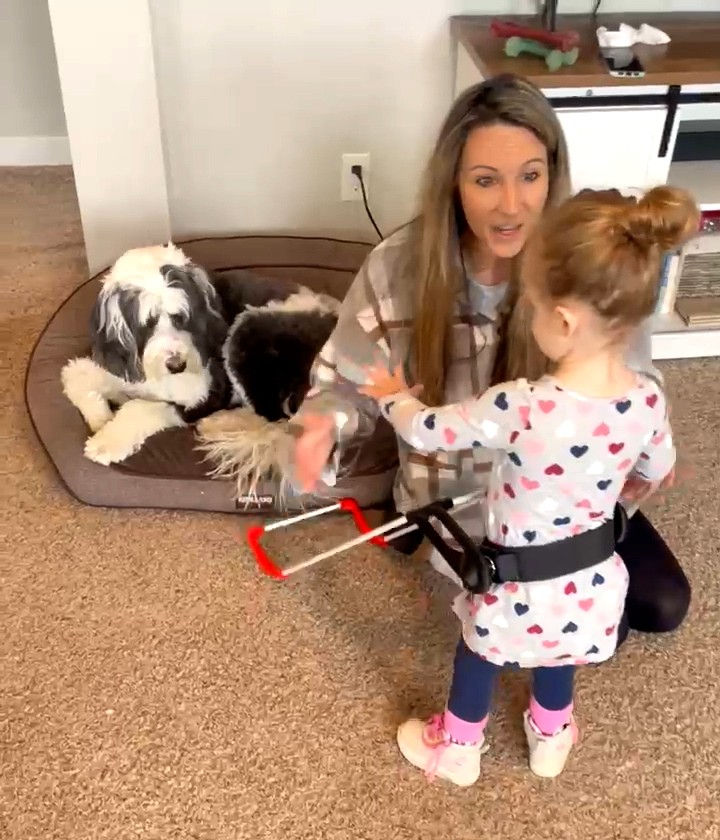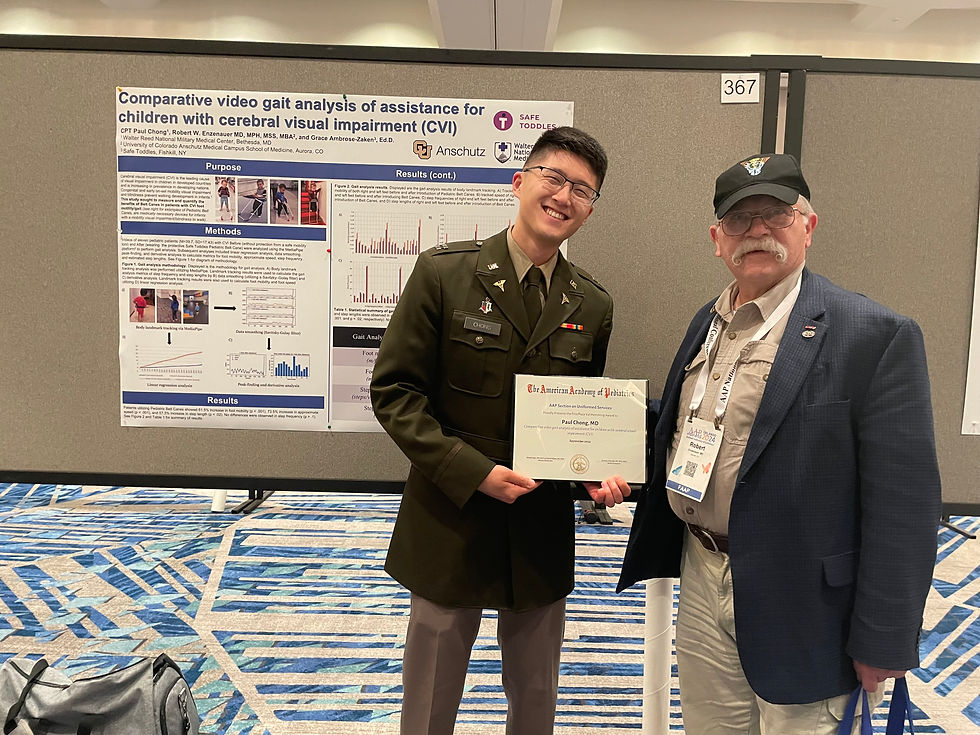Who Prescribes the White Cane? Rethinking Early Mobility for Blind Toddlers
- Grace Ambrose-Zaken

- Aug 25, 2025
- 3 min read
"My child was diagnosed as blind—now what?"
It’s a question countless parents face, yet one that still lacks a clear roadmap, especially when it comes to mobility.
👁️ The Gap in Care: Diagnosis Without Direction
When a child is diagnosed with congenital blindness or a mobility visual impairment, the first professional involved is usually a pediatric ophthalmologist. But while they confirm the diagnosis, they rarely prescribe the one thing that can change a blind toddler’s life: a white cane.

Why? Because traditional thinking assumes that young children are too small or uncoordinated to benefit from a mobility cane—and until recently, there was little research to challenge that assumption.
🚶♂️ Enter the Pediatric Belt Cane: A Game Changer
New research now shows that toddlers can safely and confidently walk when given a tool made just for them: the Pediatric Belt Cane.

Unlike the traditional long white cane, which requires coordination and active use, the belt cane attaches around the waist and holds a lightweight cane in a fixed arc. This gives the child tactile feedback—or “warning”—about their surroundings.
🧠 Why Blind Toddlers Walk Differently (and Why It’s Not Their Fault)
Sighted children learn to walk by responding to visual feedback. They slow down when they see stairs, avoid objects they can see, and explore with their eyes first.
Blind toddlers don’t get that luxury.
Without a visual warning system, they are navigating in the dark. They are often hesitant, cautious, or simply avoid walking altogether—not due to cognitive delays, but because it feels unsafe to move without feedback.

The belt cane solves this by providing a tactile buffer: a constant arc that tells them what’s in front of them—before they bump into it.
🔍 So Why Aren’t Doctors Prescribing It?
Historically, the white cane hasn’t been viewed as a medical device. It falls under the realm of orientation and mobility (O&M) specialists, not physicians.
But that mindset no longer fits today’s reality.
We now know that:
The Pediatric Belt Cane improves walking outcomes.
Mobility delays in blind toddlers are preventable.
This tool works at a time when the brain is most ready to learn.

🩺 The Pediatric Ophthalmologist’s Role: Beyond Diagnosis
Ophthalmologists already prescribe:
Glasses for refractive error
Patches for amblyopia
Surgery for structural issues
Why not prescribe the Pediatric Belt Cane as a developmental intervention?

Parents turn to ophthalmologists as trusted experts. They want to know:
“Will my child be able to walk?”
“How do I keep them safe at home?”
“What can I do right now?”
And now there’s a clear answer: give them a tactile arc as soon as they start learning to stand.
🤝 A Call for Collaboration and Change
To make this standard practice, we need:
1. Education
Integrate Pediatric Belt Cane research into medical training and CME programs for pediatric ophthalmologists.
2. Teamwork
Encourage partnerships between ophthalmologists, early intervention providers, and O&M specialists.
3. Parent Stories
Amplify real-world success stories that show how the belt cane changes lives.
4. Policy & Funding
Push for inclusion in early intervention programs and insurance coverage.

💡 Final Thoughts: The Time to Act Is Now
Blind toddlers don’t need to wait. They don’t need to fall behind. And they don’t need to be left behind.
Walking delays aren’t their fault—they’re a result of a system that hasn’t yet caught up with what we now know. The Pediatric Belt Cane is a safe, proven, life-changing tool.
If pediatric ophthalmologists take the lead in advocating for this, it could transform outcomes for children across the world.
Let’s help them take their first steps—with safety, confidence, and dignity.
📣 Call to Action
🔗 Learn more about the Pediatric Belt Cane What is a Pediatric Belt Cane?
📝 Are you a medical professional? Explore the latest research and clinical recommendations start here.
📬 Have a story to share? We’re collecting testimonials from parents and providers—submit yours here.








Comments